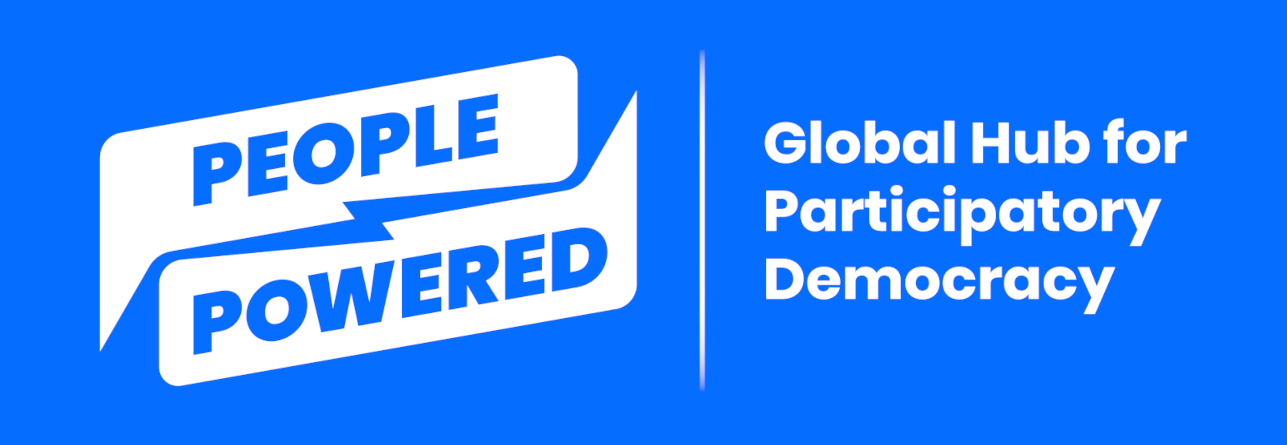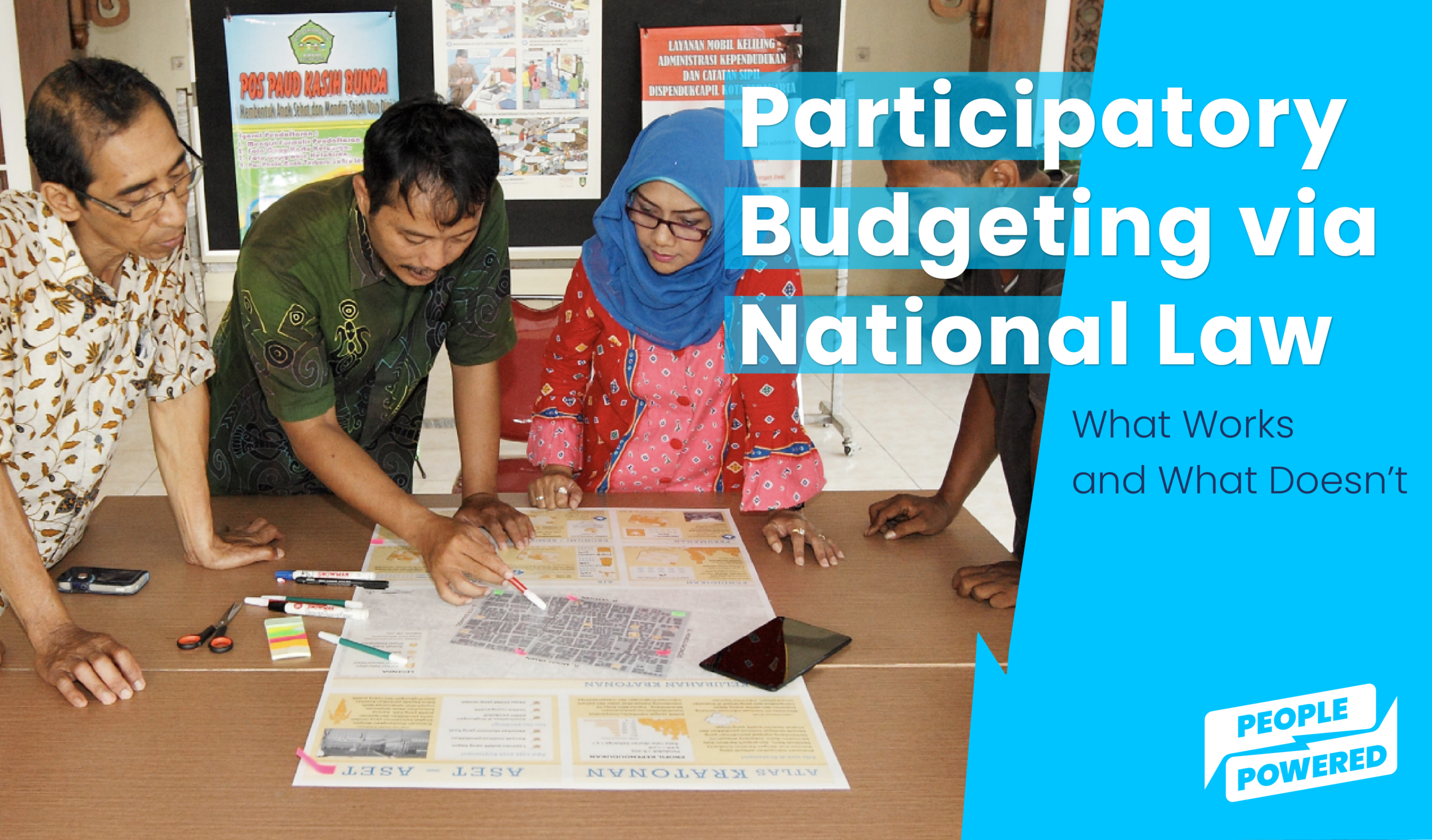Participatory Budgeting via National Law: What Works and What Doesn’t
Executive Summary
The inequalities exposed by the global COVID-19 pandemic has brought into high profile the need for greater participation in government by all sectors of civil society. It is a demand that had grown to a crescendo even before the virus crippled societies around the world at the beginning of 2020. Since 2017, the Carnegie Endowment for International Peace has tracked more than 230 significant anti-government protests in more than 110 countries. Most of them, at their core, are about people feeling left out of decision-making by the very governments that are supposed to represent them. As one history professor put it, "When passion can’t flow easily into policymaking, it congeals as angry protest, growing wilder and more paranoid."
A government’s budget—how it allocates and spends a country’s scarce collective resources—is typically a major focus for public anger, for good reason. Participatory budgeting (PB)—a process in which community members help decide how to spend a share of a government budget—is an antidote to this break in the social contract. However, although PB is now practiced by thousands of subnational governments around the world, progress is fitful and can be hard to sustain. Thus, international donors, civil society organizations, and government officials in several countries successfully pushed for national laws that attempt to institutionalize public participation in budgeting.
Until this analysis, however, no one has analyzed these efforts to learn whether and to what degree national PB laws are effective. The answer? It depends. National PB laws appear to be most effective when lawmakers and civil society groups are committed to their long-term success and when laws are carefully deliberated before implementation. We offer recommendations about what to avoid, what to do, and what additional research is needed to advance this critical conversation.
Download the Report
Download the report in English, Spanish, French, Portuguese and Korean.
A playground in Poland funded via PB
Key Findings
We identified four kinds of national laws that incorporate a participatory approach to budgeting, depending on their primary focus: PB-specific, financial governance, planning, and citizen participation. In addition, the majority of the laws are embedded in a broader effort to decentralize government. More research is needed to determine how these variations affect outcomes and impact.
PB can disappear or weaken when the original proponents of laws leave office. Even after national laws are enacted, political will is required to maintain the vitality of participatory budgeting.
The degree of implementation varies. Some laws are not implemented at all (or barely), like in Angola and Panama. Some are implemented in a piecemeal fashion (Kenya), or in formulaic, superficial ways (Peru). Still others wax and wane according to the political will of local regulators (Colombia).
These variations are due to the same dynamics that determine PB outcomes in places without national laws. For example:
Two factors clearly linked to success are the political support of stakeholders and an active civil society.
When laws are promoted by technocrat teams or international donor organizations, PB may not be implemented due to lack of political buy-in. Elected officials may view it as empowering opposition politicians, for example.
At the other end of the spectrum, local politicians may implement the process but use it for their own political gain.
Low state capacity can also impede implementation. For example, in Kenya, very few counties have opted in, in part due to low capacity.
One interesting trend is the use of incentives, rather than mandates, to encourage implementation of PB, as in Colombia and Scotland.
Donor organizations like the World Bank are increasingly interested in promoting PB as a public policy tool (for example, in Indonesia and Kenya). However, this involvement can lead to mixed results. While technical assistance is usually needed, localities may undertake PB primarily to access donor funds, not because they believe it is the best tool.
Wide implementation of PB does not always lead to the execution of the proposed projects, since decisions often are not binding. Further, in many countries, complex budgetary processes mean that there is a steep learning curve, especially when information is not widely available, or education levels are low.
Underlying these developments are several common challenges: different understandings of just what PB is, unfunded mandates, inadequate implementation, insufficient oversight, and a paucity of evaluation. In addition, the onset of the novel coronavirus pandemic led to a new complication: We documented at least three national PB programs (in Poland, Ukraine, and Portugal) that were paused to some extent during the COVID-19 pandemic. New research presented at a conference of the European Consortium for Political Research found that government indebtedness triggered by response to the pandemic may generate restrictions on implementation of participatory budgeting going forward.
Recommendations
Government reformers:
Build a diverse coalition in support.
Agree on a common definition of PB and the primary goals.
Choose the kind of law that works best for a particular context.
Delineate the specific elements of PB (scope, participants, etc.) that should be reflected in local design and implementation.
Offer incentives for implementation, rather than rely on mandates, and back it up with adequate funding.
International donors:
Extend support to diverse stakeholders.
Do not pressure governments to pass laws.
Encourage learning across countries.
Fund long-term impact research.
Researchers:
Fill the information gap by evaluating the impact of national PB laws, including their specific features.
Download the report in English, Spanish, French, Portuguese and Korean.
Read a Q&A with the lead authors of the report.







